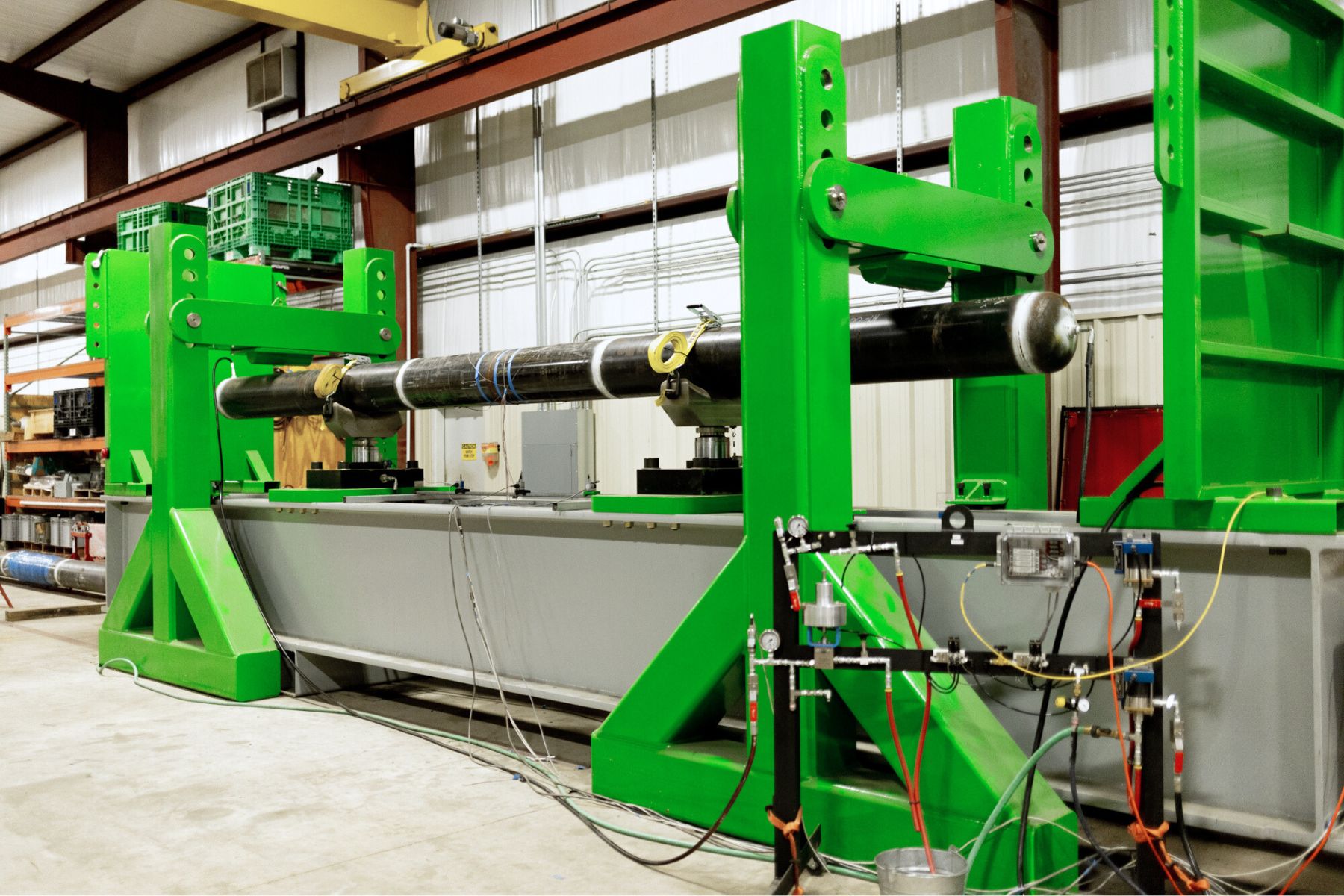2 min read
See Through Dirt: Understanding Bending Strain For Better Geohazard Threat Management
 Chantz Denowh, PhD, PE
8/4/23 11:28 AM
Chantz Denowh, PhD, PE
8/4/23 11:28 AM

When a geohazard threat is knocking at the door, knowing the next step is a complicated and frustrating process. Not wanting to overreact, but also wanting to avoid a dig that may end up being completely unnecessary, is a hard balance to strike. In the case of geohazard threats, when the right-of-way is manipulated, distressed, or changed for any reason, a clear path forward can emerge if the proper testing data is utilized.
ADV Integrity’s four-point or three-point bend frame can provide operators clarification, validation, and assurance in their decision-making. The bend frame is capable of performing tests that can determine strain capacity of threatened girth welds, determine strain capacity for future integrity management decisions, and validate technologies for reinforcing girth welds.
Determine Strain Capacity
Historically, a 0.3% or 0.5% strain is critical, but pipeline engineers today know that some vintage girth welds can take strain levels greater than that. However, it’s hard to predict the capacity of specific girth welds because many factors play into its strength, including the material, the quality of the steel, the quality of the weld, and so on. Engineered analysis of material properties gives a clearer picture of how individual girth welds will react to certain levels of strain.
To determine the strain capacity of a girth weld under duress during a geohazard threat, ADV Integrity’s bending frame can simulate the strain on a similar girth weld specimen. Using the properties determined through the test, operators can know whether the threat warrants remediation or monitoring over time.
More Comprehensive Integrity Management
In addition to reacting to worst-case scenarios, determining the strain capacity of girth welds can yield valuable and informative data for future integrity management decision-making. In addition, it allows operators to meet regulatory standards.
According to CFR 192.933, an “engineered analysis of the dent and girth or seam weld” must be performed to “demonstrate critical strain levels are not exceeded” in situations that may require remediation methods. Similar regulations can be found in ASME B31.8, which states “due consideration” must be given to “ductility and strain capacity of seam weld, girth weld, and pipe body materials.”
The first step in accomplishing the standards set in the regulations is understanding the strain capacity of the girth welds. Especially given the vintage nature of today’s pipeline system, operators will be much more equipped to responsibly and safely respond to future integrity threats with testing data supporting them.
Validating Reinforcing Technology
The bending test is also useful for validating technology that may prevent pipeline threats by reinforcing vulnerable girth welds. Composite technology is a viable option for operators to protect the weak points of their assets.
ADV Integrity is currently conducting a Joint Industry Program (JIP) to study the applications of composite technology and answer questions about their potential benefits for reinforcing girth welds. The study will establish the capabilities of composite repair technology and the requirements for regulatory acceptance. The primary focus will be to demonstrate that the use of composite technologies will significantly reinforce girth welds, even in the case of extreme geohazard loading.
ADV Integrity’s Bending Frame
ADV Integrity’s bending frame is capable of three-point or four-point bend testing, and it simulates the bending of a pipeline that occurs in geohazard threats or soil subsidence. It can test up to 30-in pipe, and it has a maximum bending capacity of 3 million ft-pounds.
Originally published March 29, 2022

